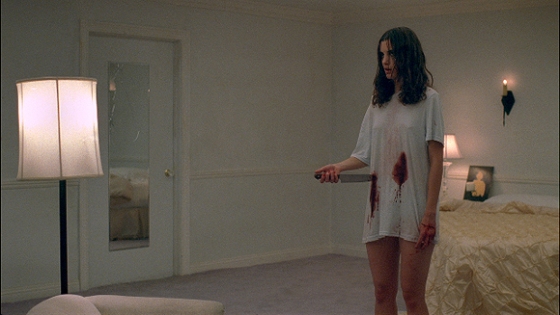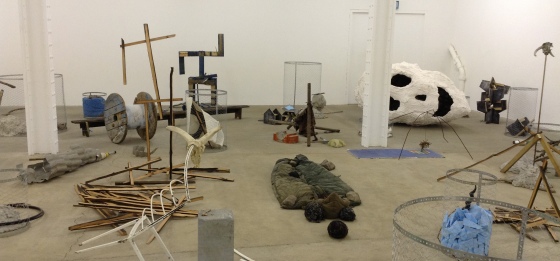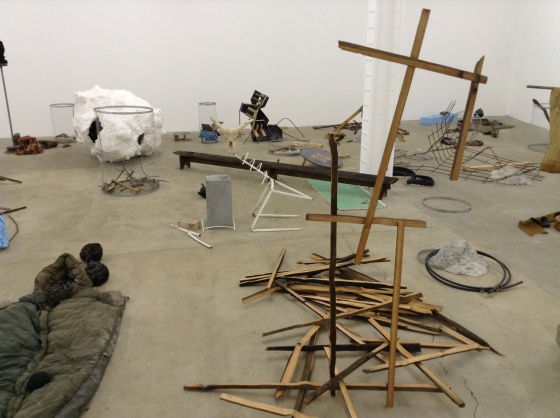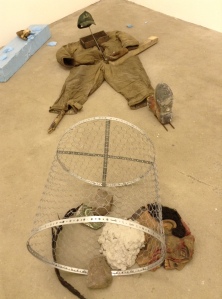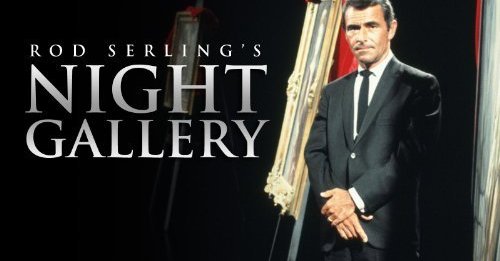How do you remake a film that never existed?
In 1973, Orson Welles gave the world F FOR FAKE; a strange amalgam of a film, one that intertwined fakery with real life but did so with upfront honesty. His blatant proclamations told the audience that the movie would lie to them, trick them, and occasionally reveal the truth. It’s a marvel to experience this masterful deconstruction of film where the unraveling of reality actually feels really…real. Forty years later, UK artist Jamie Shovlin’s continues Welles’ breakdown of narrative and influential imagery in cinematic form with his debut film ROUGH CUT. But while Welles provides a his disclaimer upfront, Shovlin’s magic relies on a back-story that has been a part of an art project for the past few years. What does that mean? Well, ROUGH CUT is a documentary about the re-making a film, HIKER MEAT, that never actually happened. And despite what you will see in ROUGH CUT, HIKER MEAT will never exist. Confused? You won’t be…
The basic premise is this: HIKER MEAT is an imaginary film by a fake Italian director named Jesus Rinzoli that artist Jamie Shovlin, writer Mike Hart (name is an anagram for Hiker Meat), and musician Euan Rodger created in order to give scoring credit to another fake project, the band Lustfaust. ROUGH CUT is the culmination of these projects, a documentary that shows how Shovlin and his crew re-constructed scenes from infamous horror films in order to “make” the new version of HIKER MEAT. As the titles, trailer and imagery suggest, Shovlin culls from horror and exploitation genre history to reconstruct films that are easily recognizable to any horror fan: EVIL DEAD, OPERA, TORSO and A NIGHTMARE ON ELM STREET III (amongst many others).
Referenced and re-made as closely to the original as possible, using the English countryside as the stand-in landscape for mainly American films, Shovlin creates a metaphoric and literal combination of horror clichés. These individual scenes taken from different films share in specific genre tropes (for instance, there is the prominent fixture of the ‘Final Girl’) but they are, at their core, different stories. By showing the construction of attempting to recreate these scenes and suggesting that they will be cohesively pieced together, ROUGH CUT is more of a revelation of the mystery and magic of cinema rather than a simple montage. So while ROUGH CUT focuses on the attempt to remake parts of HIKER MEAT, HIKER MEAT is only a construct. The narrative lies in the making.
Existing only in trailer form, posters, artwork, and installation piece, HIKER MEAT is fascinating precisely because while it is present in the world, it’s not really there. As Shovlin says, “HIKER MEAT is effectively the false hand that allows ROUGH CUT to exist.” You’ll see glimpses of its potential life in ROUGH CUT, but the desire to see the outcome misses the point. Instead, we should revel in the mystery and take away what’s at the heart of the film: the joy, tribulations, complications, hilarity, and insanity that come with the territory of making a movie. The fact that they’re making something that’ll never exist in a traditional image form is what makes the film uniquely fantastic. That’s the touchstone of reality in ROUGH CUT.
This originally appeared on Fangoria in June 2014.



